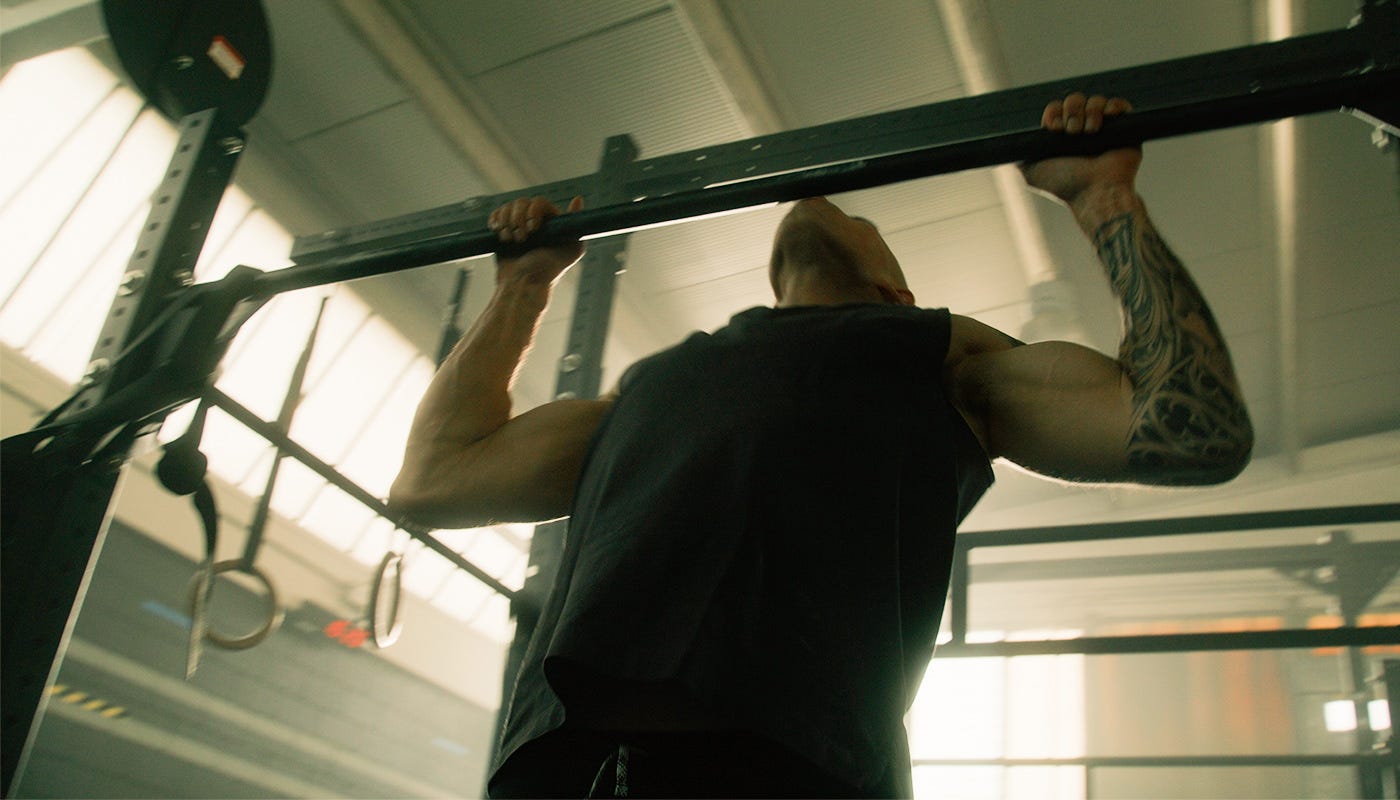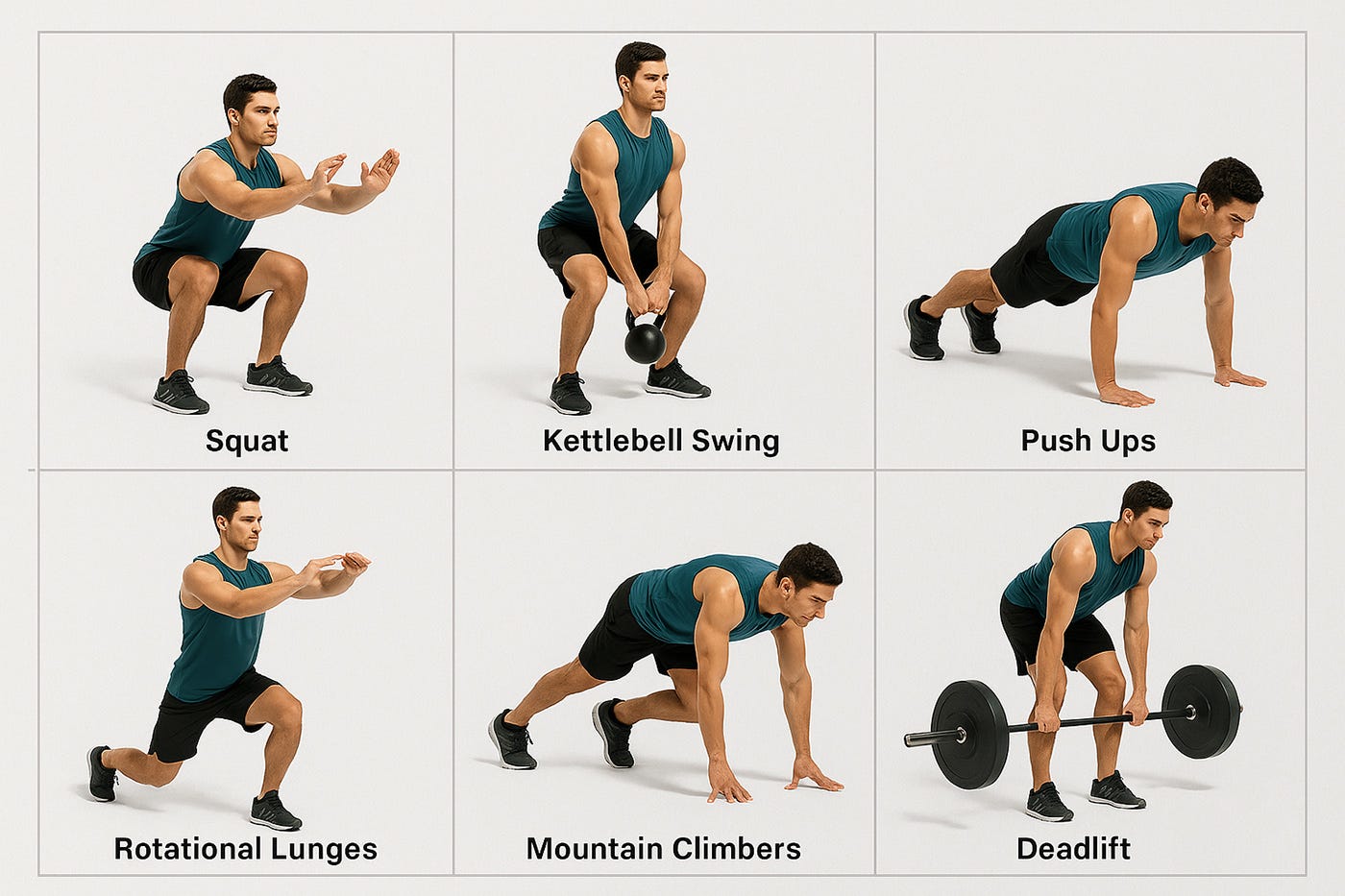MUSCLE
Functional Training:
the ultimate method to build strength, agility, and endurance.
Functional Training:
the ultimate method to build strength, agility, and endurance.
by Elena Casiraghi
Functional training is not a passing trend in the fitness world—it is a complete, scientifically grounded training method, ideal for those who want to develop strength, endurance, and agility in a dynamic way. This innovative approach treats the body as an integrated, interconnected system, focusing on natural, multi-joint movements that effectively stimulate the muscles.
Through targeted exercises of increasing intensity, functional training significantly enhances core stability and muscular strength—key elements for athletic performance at any experience level. It not only improves daily functional abilities but also builds a strong, well-defined physique, providing tangible benefits both for professional athletes and for anyone seeking a high-performing, aesthetically sculpted body.
Why is functional training so effective?
Every workout is “functional” in a way, since it aims to improve certain abilities. In everyday language, functional training refers to a style of exercise that mimics real-life movements like lifting, pulling, pushing, and rotating, helping people perform daily and athletic tasks more efficiently. By engaging muscle groups in synergy, it develops essential motor skills.
Cinque buoni motivi per iniziare subito:
- Improves strength and endurance—key for athletic performance and overall well-being.
- Enhances cardiovascular capacity through varied intensity.
- Strengthens the core, improving balance and motor control.
- Stimulates neuromuscular coordination, making movements smoother and more efficient.
- Increases mobility and flexibility, reducing the risk of injury.
Is functional training suitable for everyone?
Yes—and that’s its greatest strength. For athletes, it boosts performance, optimizes joint mobility, and reduces injury risk. For fitness enthusiasts, it offers a complete and varied workout with scalable exercises to match experience levels. For active individuals, it improves daily movement, balance, and posture.
The disciplines of functional training
Functional training can be divided into various specializations, each with specific focuses aligned with different goals:
- Functional Strength Training: combines strength and functionality through exercises that replicate natural movements to develop power, stability, and athletic capabilities applicable to daily life
- Core Functional Training: focuses on strengthening the core (including abdominal, lower back, pelvic, and deep trunk muscles), essential for posture, balance, and coordination
- Metabolic Functional Training: emphasizes cardiovascular fitness with high-intensity circuits that combine functional movements to maximize calorie burn and boost endurance
- Mobility Functional Training: aims to improve joint mobility and muscle flexibility, both essential for proper execution of functional movements and injury prevention
- Sport-Specific Functional Training: adapts functional training principles to the needs of various sports, improving athletic performance through tailored movement patterns

Functional training, nutrition, and hydration
Functional training intensely stimulates various muscle groups. Supporting this effort with a proper nutrition strategy is essential for performance and recovery.
Before the workout
A key point: training on an empty stomach is not recommended due to the intensity of the exercises. It’s essential to consume carbohydrates for energy. Food choices depend on the time available before training and personal digestive tolerance.
| Time Before Training |
What to Eat |
| At least 2–3 hours | A balanced meal with complex carbs, protein, and healthy fats—e.g., durum wheat pasta with chicken and vegetables, or a portion of quinoa or brown basmati rice with tuna and extra virgin olive oil |
| 60–90 minutes | An easy-to-digest energy snack, like toast with peanut butter and jam, a banana with a few almonds, or greek yogurt with honey |
| Less than 30 minutes | Opt for an energy bar or a carb-rich jelly for quick energy release without burdening digestion |
After the workout
Protein is essential for muscle repair and growth, helping prevent catabolism and promoting optimal recovery. It’s best to consume high-quality protein within two to three hours after training to maximize protein synthesis. Ideal sources include eggs, chicken, and fish.
| Time After Training |
What to Eat |
| Within 2-3 hours | A complete post-workout meal, such as an omelet with whole grain bread, or quinoa with salmon and vegetables |
| If the next meal is far | A protein shake (whey or plant-based) right after training is a useful and effective option to aid recovery |
In general, it’s best to spread protein intake throughout the day. The ideal daily intake ranges from 1.2g to 1.8g per kilogram of body weight, depending on training intensity, weekly frequency, and age. Meeting your daily needs helps optimize training results and improves recovery between sessions.

Functional training and hydration
Hydration plays a crucial role in maintaining optimal performance and reducing the risk of muscle fatigue. During physical activity, fluids and electrolytes are lost and must be properly replenished:
- Before the workout: ensure good hydration by drinking at least 500 ml of water one hour before.
- During the workout: If the workout lasts more than 45–60 minutes and is high intensity, an electrolyte-rich drink can be beneficial.
- After the workout: rehydrate with water or electrolyte solutions to restore fluid balance.
Basic functional training exercises
Foundational exercises
Functional training can include a wide range of exercises. The ones listed below represent just some fundamental examples that can form the foundation of a complete workout:
- Squat and variations: a basic exercise that develops functional lower-body strength. A more advanced variation is the Medicine Ball Squat Throw, which combines the power of the squat with the explosiveness of a throw.
Execution: stand with feet shoulder-width apart, holding a medicine ball. Lower into a squat, keeping the back straight and the core engaged. As you rise, throw the ball against a wall or upward.
Benefits: strengthens legs and core, improves muscular reactivity. - Kettlebell Swing: a key exercise to develop explosive hip strength and endurance.
Execution: place a kettlebell in front of you, stand with feet apart, and grasp it with both hands. Hinge at the hips, swinging the kettlebell back between the legs, then explosively extend the hips to bring it to shoulder height.
Benefits: enhances glutes, core, shoulders, and overall body control. - Push-ups and variations: fundamental for developing the upper body functionally, while also engaging stabilizers and core.
Execution: keep the body aligned, hands under shoulders, lower down by bending the elbows until the chest almost touches the ground, then push back up.
Benefits: strengthens chest, triceps, shoulders, and core. Improves stability and muscular endurance. - Rotational lunges: ideal for improving mobility and strength in motion.
Execution: from a standing position, step into a forward lunge and rotate the torso toward the leading leg. Return to standing and repeat with the opposite leg.
Benefits: enhances stability, balance, and functional strength. - Mountain Climbers: excellent for cardiovascular conditioning and overall toning.
Execution: in a plank position, drive one knee toward the chest, then alternate legs rapidly as if “climbing a mountain”.
Benefits: boosts cardiovascular endurance, tones legs and core, and improves agility. - Deadlift and variations: fundamental exercises to strengthen the posterior kinetic chain, essential in any complete functional training program.
Execution: stand with feet hip-width apart, keep a neutral spine, grab the barbell from the ground and lift it by extending hips and knees in sync.
Benefits: trains glutes, hamstrings, lower back, and core. Increases strength, power, and posture.
These exercises can be performed individually, with specific sets for each movement, or in a circuit, alternating between them for a more intense and dynamic workout. The beauty of functional training lies precisely in its versatility and in the ability to adapt exercises to specific needs and each person's level.Esercizi base del functional training.

Equipment and training methods.
One of the most interesting aspects of functional training is the ability to personalize each session. It can be done using just body weight or with tools like:
- Kettlebell: ideal for power and endurance
- Medicine balls: perfect for explosive and rotational moves
- TRX/Suspension trainers: using body weight to build strength and stability
- Resistance bands and ropes: great for mobility and endurance
- Box/Plyo boxes: essential for plyometric and jumping exercises
- Barbells and dumbbells: for developing strength and power
For cardio, functional training often includes high-intensity aerobic tools such as rowers, air bikes (assault bike), skiergs: these machines are designed to work multiple muscle groups at once, while improving cardiorespiratory capacity.
How to optimize functional training
- Focus on technique: proper form is essential to avoid injuries
- Progress gradually: increase loads and intensity in a controlled way
- Work with an expert coach: to refine technique and maximize results
What links functional training with Hyrox and CrossFit?Functional training is a core component of the fitness world and is also found in disciplines like CrossFit and Hyrox. Both are high-intensity workouts that incorporate resistance and cardio. However, they differ in approach:
|
Why integrate functional training into your routine?
Functional training is a complete and versatile training method, perfect for improving strength, agility, and endurance while also focusing on mobility and injury prevention. Whether you're an athlete or fitness enthusiast, incorporating this approach can make a real difference in reaching your goals.
If you’re looking for an effective and engaging workout—functional training is the way to go. Ready to take on the challenge?
IMPORTANT NOTICE: the information provided is for informational purposes only and does not replace the advice of your physician or a qualified healthcare professional. The content is intended for healthy individuals: any dietary regimen or physical activity must be supervised by a qualified professional, as required by Italian law. Enervit S.p.A. assumes no responsibility, as the information is purely educational. Anyone wishing to begin a nutritional or physical activity program should first consult with their trusted specialist.







